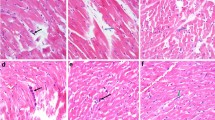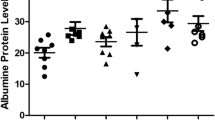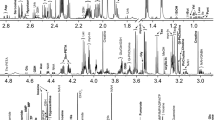Abstract
ATTEMPTS have been made to measure the total concentration of fixed base (sodium, potassium, calcium and magnesium) in the cells of the renal cortex of adult male rats under different conditions. All experiments were carried out with thin slices prepared as for manometric work, and the total concentration of base was determined in portions of moist tissue weighing 300–500 mgm. by the benzidine sulphate method described by Peters and van Slyke1 for serum. The media used in all these experiments were as described by Robinson2, and slices which were respiring were maintained at 38° C. in oxygenated solutions in the apparatus described for the “Short Experiments” in the same publication2.
This is a preview of subscription content, access via your institution
Access options
Subscribe to this journal
Receive 51 print issues and online access
$199.00 per year
only $3.90 per issue
Buy this article
- Purchase on Springer Link
- Instant access to full article PDF
Prices may be subject to local taxes which are calculated during checkout
Similar content being viewed by others
References
Peters, J. P., and van Slyke, D. D., “Quantitative Clinical Chemistry”, 2, “Methods” (London: Baillière, Tindall and Cox, 1932).
Robinson, J. R., Proc. Roy. Soc., B, 137, 378 (1950).
McCance, R. A., and Widdowson, E. M., “The Chemical Composition of Foods”. M.R.C. Spec. Rep. 235, 2nd edit. (H.M.S.O., London, 1946).
Author information
Authors and Affiliations
Rights and permissions
About this article
Cite this article
ROBINSON, J. Total Concentration of Fixed Base in Cells of the Renal Cortex of the Rat. Nature 169, 713–714 (1952). https://doi.org/10.1038/169713a0
Issue Date:
DOI: https://doi.org/10.1038/169713a0
This article is cited by
-
Die Beziehungen zwischen intracellul�rem osmotischen Druck und cellul�rem Wasserwechsel
Klinische Wochenschrift (1962)
Comments
By submitting a comment you agree to abide by our Terms and Community Guidelines. If you find something abusive or that does not comply with our terms or guidelines please flag it as inappropriate.



